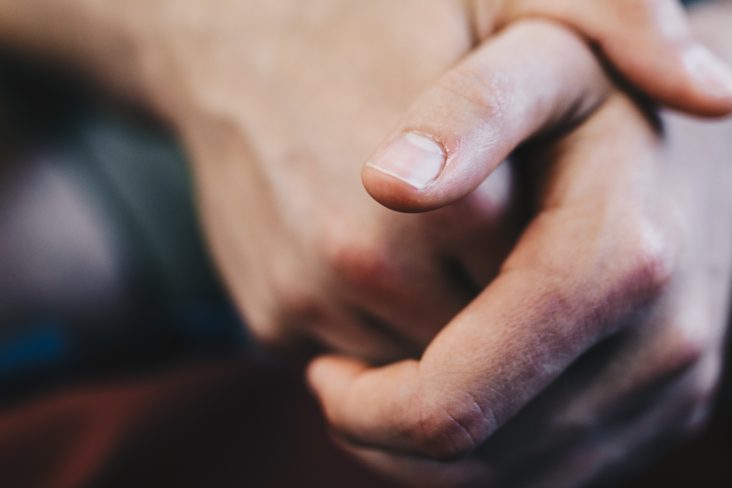While it’s simply “being human” to occasionally pick at your skin, at calluses, or at the cuticles on your fingers, when a person obsessively self-grooms, it could be a sign of dermatillomania or excoriation disorder. In layman’s terms, this is a skin picking disorder. The condition is a form of obsessive-compulsive disorder and is one of a group of body-focused repetitive behaviors (BFRB). Dermatillomania damages skin and is characterized by compulsively picking, touching, pulling, rubbing, digging into, scratching, or even biting at one’s own skin as a way to get rid of perceived skin irregularities.
Signs of Dermatillomania
Research shows that anywhere between 2% and 5% of people compulsively pick at their skin. Females make up about 75% of those who are diagnosed with excoriation disorder. Skin picking can begin at any age, but commonly shows up in adolescence or at the onset of puberty. The condition made come and go over time, and the location the person picks at may change, but the disorder is generally chronic.
The Diagnostic and Statistical Manual of Mental Disorders, Fifth Edition (DSM-5) signs and symptoms of dermatillomania include:
- Skin picking that results in visible lesions, skin damage, scars and possibly disfigurement
- The person has made repeated, unsuccessful attempts to stop picking at their skin
- The symptoms cause clinically significant distress or impairment
- The symptoms are not caused by a medical or dermatologic condition or by a substance (example: opiate withdrawal)
- The signs and symptoms are not better explained by another psychiatric disorder
Picking at the skin can cause anxiety, depression and embarrassment in those who have dermatillomania. They may attempt to cover their skin lesions with makeup or clothing and may avoid situations in which their condition may be discovered. This can lead to isolation and emotional distress, which can increase the risk of having a mood or anxiety disorder in addition to their dermatillomania. Another complication can be the need for medical care because it isn’t uncommon for the person to get a skin infection, open wound, or scars from picking too much.
Treatment for Skin Picking Disorder
It is thought that fewer than one in five people will seek treatment for excoriation disorder, however Cognitive Behavioral Therapy (CBT) is very helpful for those who do. CBT helps patients identify the negative or inaccurate thoughts, feelings and behaviors that have become problematic and teaches them how to challenge and change their reaction to them.
While the main therapy for dermatillomania is behavioral therapy, medication is sometimes used to reduce the feelings that lead to compulsive skin picking. Although psychiatric medications have limited success, there are some people who benefit from temporary use of them, particularly if they have a concurrent condition, such as anxiety or depression. Additionally, some skin medications can help the underlying condition (such as acne) that causes the individual to pick at their skin.
As a family member, it can be difficult to be supportive of a person with dermatillomania or other BFRBs. The behavior can strain relationships with friends and family. Remember to communicate with patience and empathy and remain calm when talking to the person. If you feel overwhelmed, join a support group or explore the resources in self-help groups or in books on the subject.
Get Help for Dermatillomania
For more information about how a child psychologist at the Children’s Center can help your child overcome skin picking, contact the Children’s Center for Psychiatry, Psychology and Related Services in Delray Beach, Florida or call us today at (561) 223-6568.


2 Comments
Pingback: Self Harm - Is Your Child Engaging in it? - The Children’s Center for Psychiatry, Psychology, & Related Services
Pingback: Puberty Psychology | World News - Breaking international news and headlines